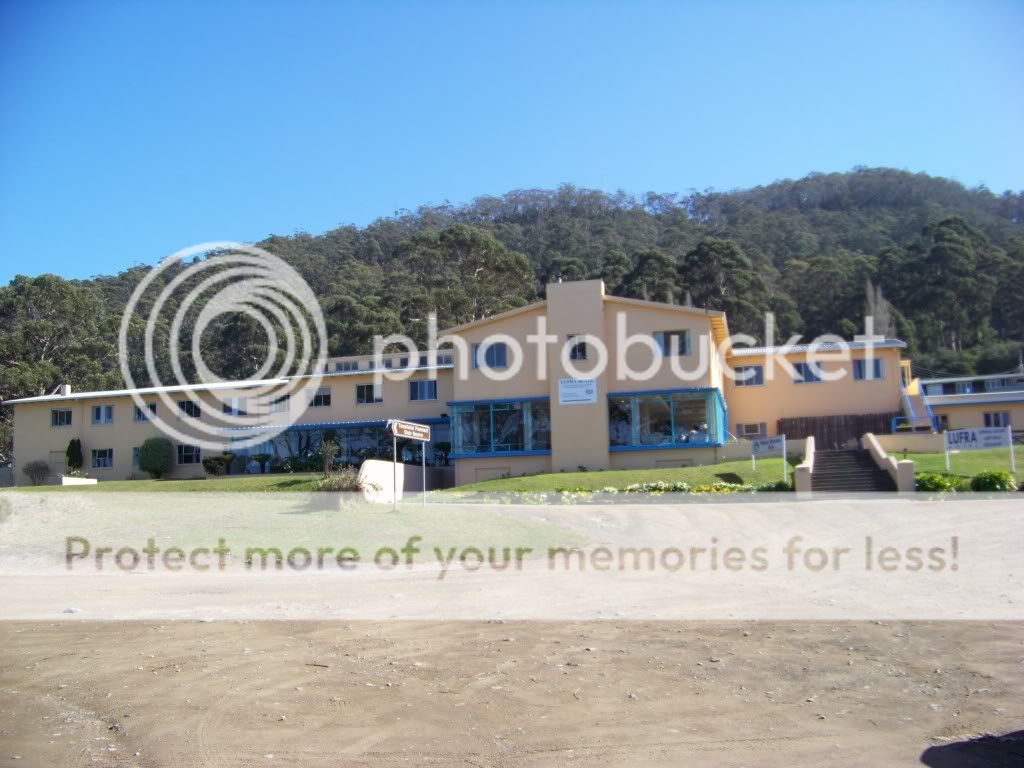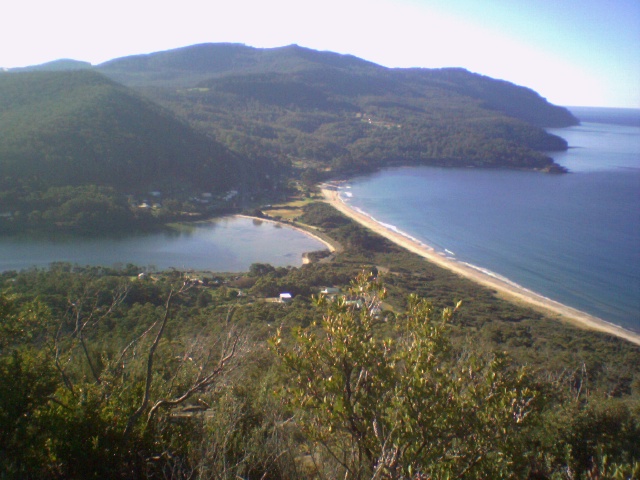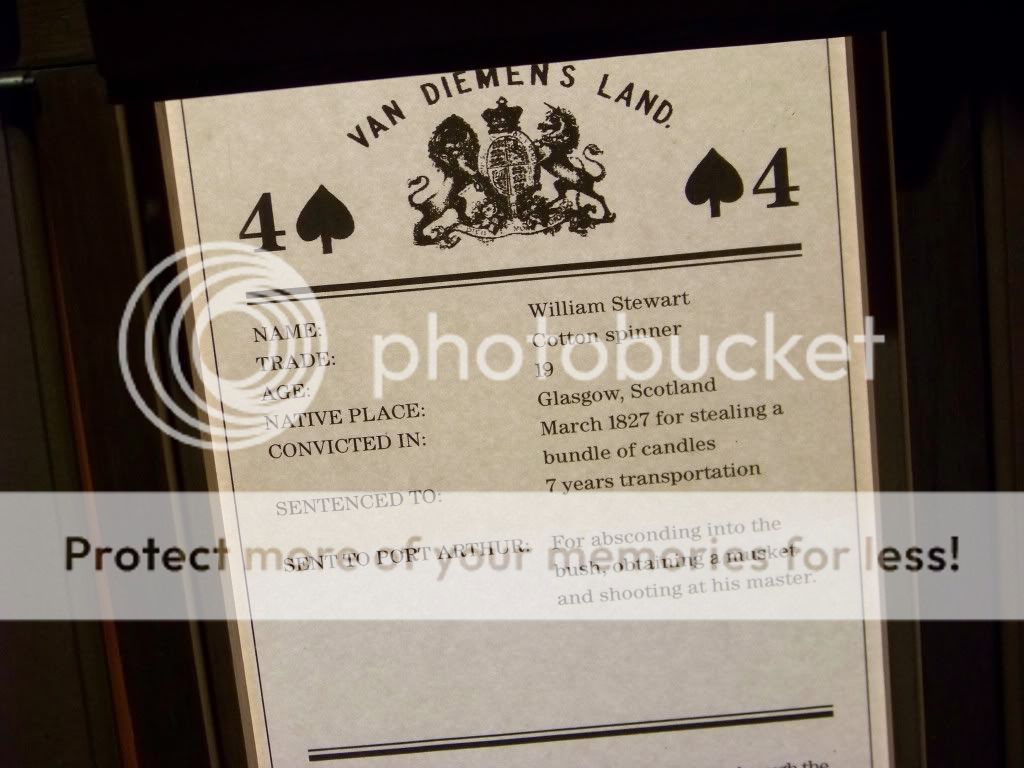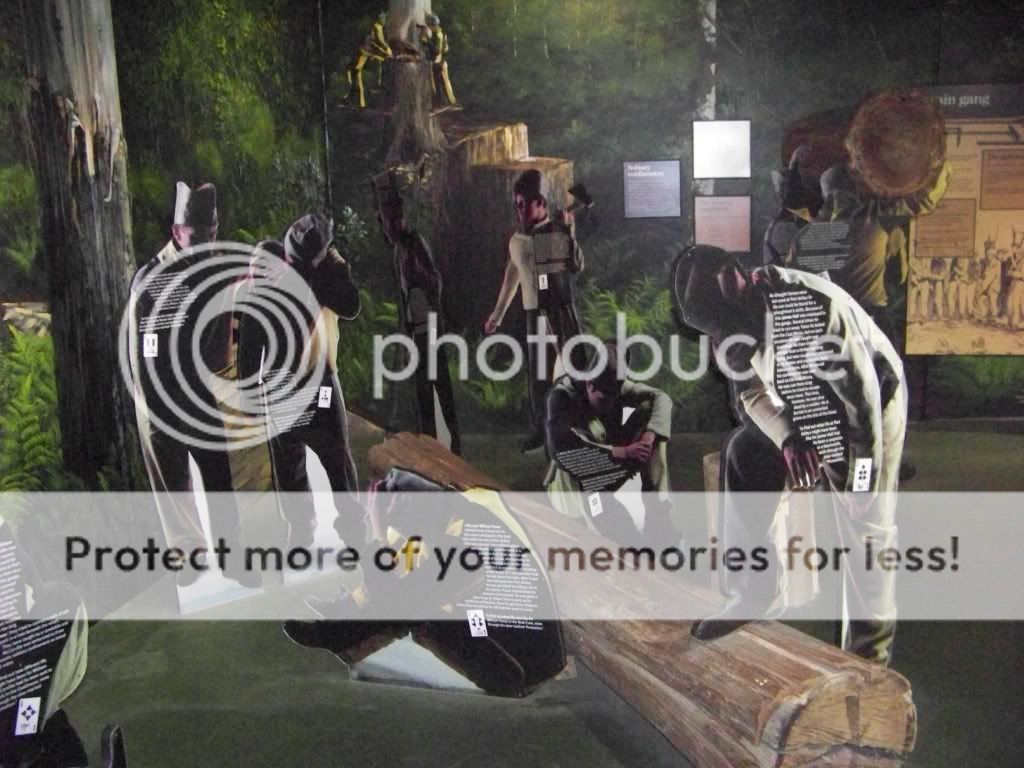First some geography and some history. Port Arthur was established as a penal settlement for "the worse case" convicts, those not expected to be rehabilitated. In fact many of them were considered recalcitrants who were transported from other convict settlements as a result of their intractable behaviours.
(Source: The Convict Trail )
Eaglehawk Neck is a narrow isthmus connecting the Tasman Peninsula to mainland Tasmania. Locally known as the Neck the isthmus itself is around 400 metres long and under 30 metres wide at its narrowest point. It forms a natural gateway to the peninsula that was utilised by the British in 1830s when a line of dogs was chained to posts across the neck to warn of any convicts attempting to escape the prison at Port Arthur. The area was heavily patrolled by soldiers, and the guards' quarters still remains as a museum. Many attempts were made by prisoners to escape via the neck, including those of Martin Cash. The area has a beautiful and rugged terrain and several unusual geological formations. These include the Tessellated Pavement, an area of flat rock that looks to be man made but is in fact formed by erosion. Also nearby are Tasman's Arch, the Blowhole and the Devil's Kitchen, all striking natural formations.
Eaglehawk Neck from Martin Cash's Lookout.
(Source: Eaglehawk Neck, Tasmania )
We Took the A3 to Sorrell and then down the A9 to Eaglehawk Neck. The country was hilly, heavilly timbered and inhospitable as the road wound tortuously as tho' following a goat track. Our first stop was at Eaglehawk Neck where we visited several viewing areas to observe the natural rock formations and beauty of the area.
Hotel Resort at Eaglehawk Neck

Part of the Tessellated Pavement above the beach line.
A Bombora forms off the headland over a reef.
Surf Beach breaking onto "the neck" on the ocean side
The sheer steepness of the cliff face above the Tessallated Pavement formation.
Leaving Eaglehawk we drove to the Port Arthur ruins. A pricey admission fee and you need to be prepared to do quite a bit of walking to see most of it and, really, I recommend that you allow two days to see it all.
There is a superb museum and diorama exhibit, full of interesting facts and exhibits. On admission each visitor is given a playing card and when you enter the museum you check your card against its matching card to find out "Who you are?" as a "convict" and then you can follow that convict's experiences through the exhibit. Each event that happens to the convict takes you through a different door to a different scene that eventuated in that convicts actual existence.
My poor young convict was sent to Port Arthur for absconding at the Sydney Penal Settlement.
He did not adapt well to the rigorous life on a labour gang at port Arthur, got very ill, ended up in the "hospital" and died some nine months later.
A labour gang - my William Stewart is sitting on the ground holding his head.
Rhonda's convict was a skilled blacksmith who had attempted to escape from the Hobart convict settlement, so he progressed away from the labour gangs to the workshops, received better quarters and rations and eventually was released back to the Hobart convict settlement for his 'good behaviour'.
The difference in labour gang accommodation and workshop quarters
We spent several hours viewing the exhibits and walking the grounds. Then some lunch in a really spacious cafeteria and we then departed, journeying through White Beach, Nubeena,and Premaydena to Koonya and Taranna and a visit to the Federation Chocolate Factory (a must) and we watched through viewing windows as the fine handmade chocolates were made.
(Source: Taranna on Norfolk Bay, Tasman Peninsula. © Michael Walters Discovertasmania.com )
From there it was home to The Chancellor Hotel, a quick shower and change, a drink with our daughter and her partner and then dinner before packing for our flight home on the following day.
















No comments:
Post a Comment